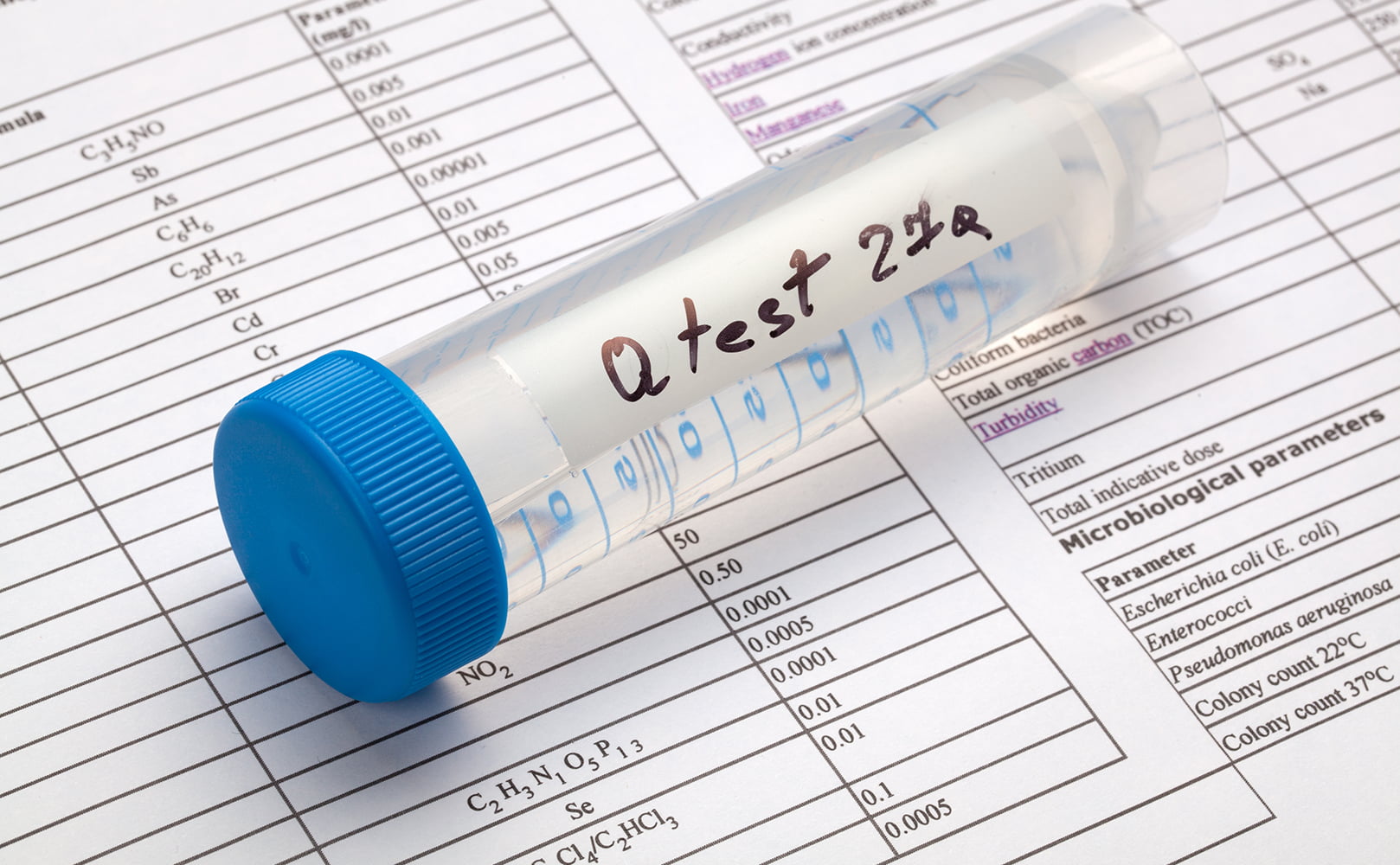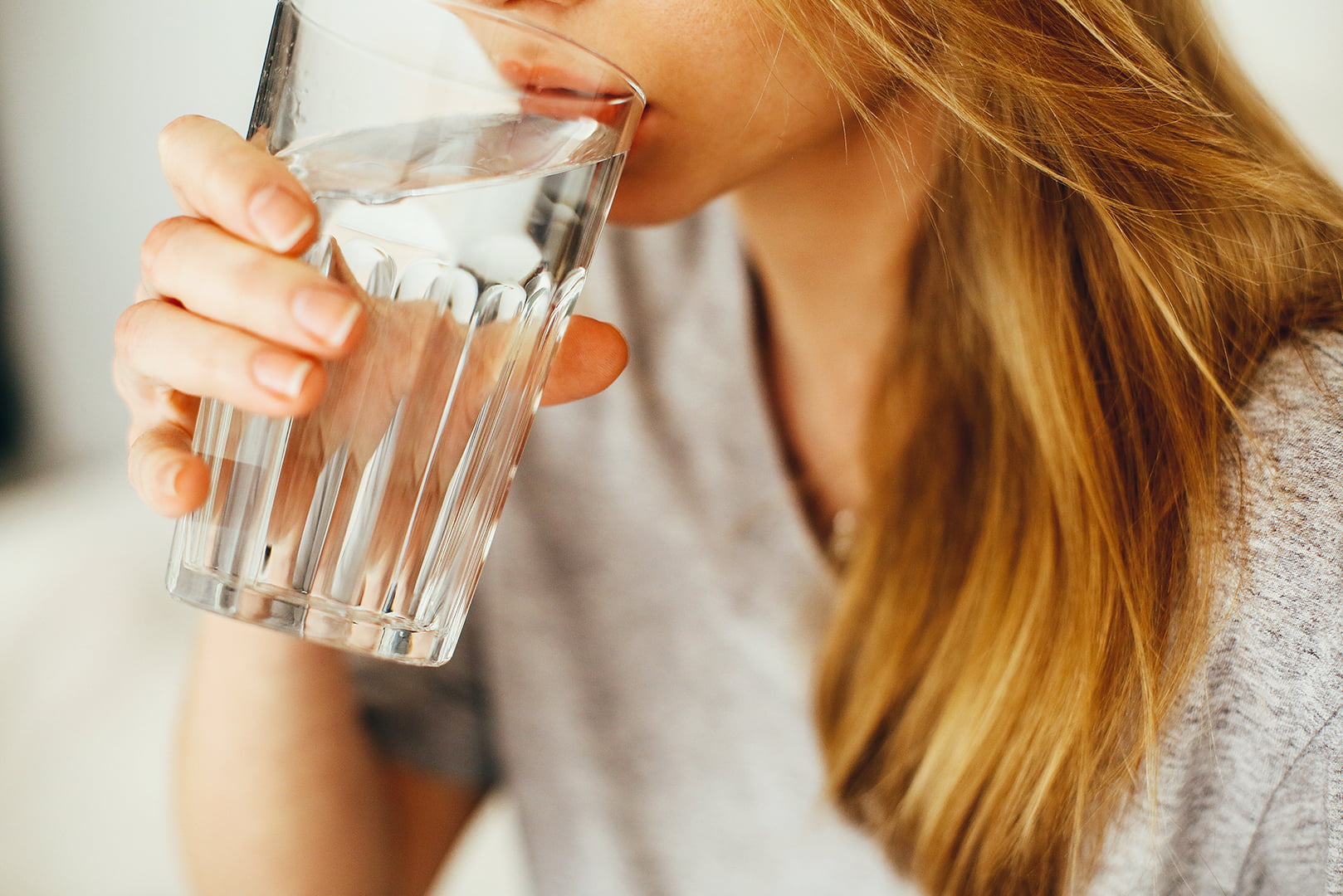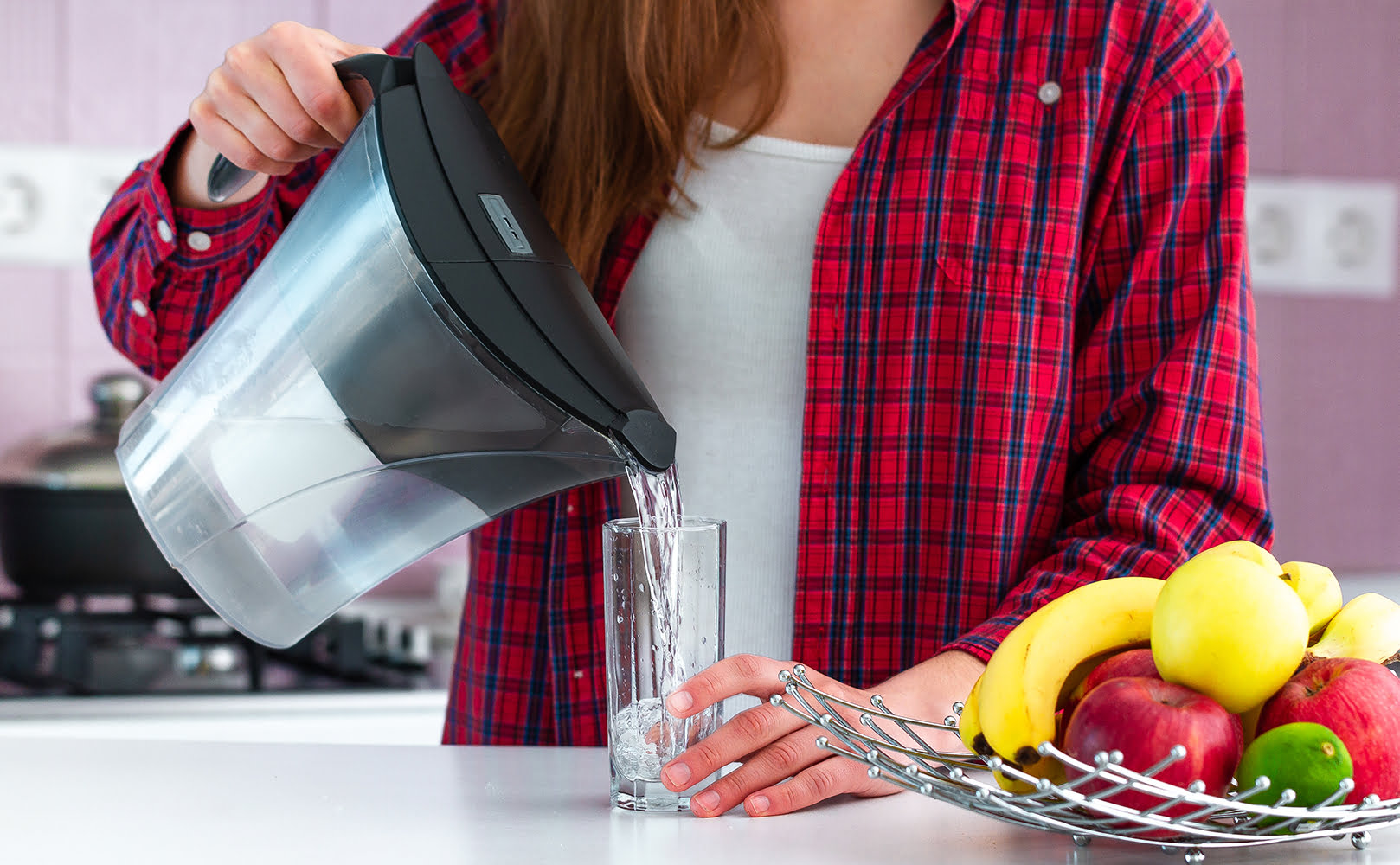How Can You Tell If There’s Lead in Your Water?
Written by: Gene Fitzgerald // Last Updated: Apr 14, 2023
This page may contain affiliate links. If you buy a product or service through such a link we earn a commission at no extra cost to you. Learn more.
Lead is a dangerous contaminant to have floating around in your water supply. It has many health implications, especially for children.
What’s more disturbing is that you can’t detect its presence in water unless you’re looking for it specifically.
Although you can’t smell, see, or taste lead in water, there are things you can do to check if it’s in your water supply. This article will discuss a number of them, along with the possible sources and side effects of lead contamination.
Key Takeaways
- There are no obvious physical signs indicating lead in water.
- The only accurate way to detect lead in water is through a water test. This can be done by taking a water sample to a certified lab or similar service provider.
- You could also test your water using a DIY test kit.
How to Know If You Have Lead in Your Water
There aren’t any obvious physical signs that can tell you that lead is in your water.
The only accurate way to find out is through a water test. So if you want to know if lead is in your water, a test is the best route.
Side note: If you discover that the lead concentration in your water is above 15 parts per billion, you have cause to worry. Although any amount of lead in water isn’t healthy, 15 ppb or above is extremely dangerous, and you should immediately find a way to remove the lead from your drinking water.
Have Your Water Tested
There are different ways to test your water for lead.
1. Testing at a Certified Lab
You can take a sample of your water to a private laboratory and have them test it for traces of lead. This is by far the best test option available.
However, you have to confirm that the lab has a certification from the Department of Environmental Protection (DEP) in your state. If you can’t find their certification, there’s another alternative to try: You can check the EPA’s website for any DEP-certified labs around you.
Calling the EPA’s safe drinking water hotline is also a good idea. They can help direct you to a certified lab.
Once you’ve contacted the lab, they’ll give you information on how the lead test will be conducted, how to collect a water sample, and what precautions to take.
2. Testing at a Local Water Treatment Company
Local water treatment companies will most likely test your water for free.
Even some water-filter brands offer free testing to potential customers. These are cheaper alternatives you can try if you can’t afford a private lab.
In addition, you can check Lowe’s or your Home Depot’s website to find retailers offering free tests.
3. Verifying with Your Local Water Supplier
The U.S. Environmental Protection Agency obligates water utilities to carry out water tests and share the reports with customers. These water quality reports are called Consumer Confidence Reports.
Using them as a substitute for a water test is possible as they contain all the necessary information about your water, including its source, quality, and concentration of contaminants. Usually, you can find these reports online, or ask your water supplier about them.
4. Buy a DIY Test Kit
This is the simplest option available. Usually, all you have to do after buying the kit is dip a test strip into a water sample.
The test will come with instructions on how to read the result afterward.
Depending on the brand, these tests come at $20-50. However, if you want a complete report on all the impurities in your water, you can get a send-away kit (which you’ll have to send to a lab for results) at about $250.
5. Inspect Your Plumbing
Another way you can find out if there’s lead in your water is by checking the plumbing in your home.
The most critical pipes to check for lead are those inside the home and the header pipe (which connects the city water line to your main water line).
It’s usually easy to tell if pipes are made of other materials like copper or plastic just by glance.
On the other hand, you’ll need to perform a simple test to tell the difference between lead and galvanized steel:
- Take a coin or key and scratch the surface of the pipe. The pipe is made of lead if the scratched area looks silver or shines a little. If it doesn’t scratch, it’s likely galvanized steel.
- You can also use a magnet. If it sticks to the pipe, it’s not a lead pipe. Lead is non-magnetic.
Sources of Lead contamination
Lead contamination could be coming from any point in your water supply. However, here are a few sources you should be aware of:
- The pipes that connect your home to the water main in your street and later the water utility are called service lines. Sometimes these pipes are made of lead, especially the ones in homes built before lead pipes were banned in 1986. These service lines are the most common source of lead contamination.
Lead can also be found in
- pipes inside your home
- Solder on brass or chromium pipes
- Old faucets and other fixtures
- Lead gooseneck pipes
- Other plumbing materials
Lead gets into the water when lead pipes start to age and wear away or when acidic water leaches lead from them over time.
Symptoms of Lead Exposure
Lead exposure usually leads to poisoning after building up in the body over several months or years.
Affected individuals don’t usually show physical signs until the lead levels are at a dangerously high point. It then produces symptoms such as:
- Headaches
- Muscle or joint pain
- Stomach cramps
- Constipation
- Fatigue or loss of appetite
- Troubled sleep
- Irritability
- Loss of sex drive or low sperm count
- Nausea or vomiting
- Developmental delay or learning difficulties in children
- Complications in pregnancy or death of fetus
Other symptoms include hearing loss, memory impairment, baby colic, weight loss, and seizures.
Why Is Lead in Drinking Water Dangerous?
Lead in your drinking water is a big deal and must be taken seriously. This is because consuming lead continuously for an extended period could lead to serious health problems.
And even in small quantities, lead can do a lot of damage to your body system. It is very toxic once it accumulates, and being present in drinking water makes it worse because it is consumed often.
Who’s at Risk?
Generally, young children, pregnant women, and people with weak immune systems are more vulnerable to lead contamination.
For example, infants who drink formula prepared with lead-contaminated water are at great risk because of the relatively large amounts of water their little bodies consume.
Pregnant Women
Lead exposure produces serious side effects in pregnant women. This is because, over time, it gets stored in the bones along with calcium.
So during development and especially when calcium levels are low in the body, lead is released to the fetus in place of calcium. This can cause severe damage to the fetus: Premature birth, developmental delay, and reduced fetal growth.
Kids
Children are probably at the greatest risk of having health problems after consuming lead. Since their fast-growing bodies absorb things quickly, lead poisoning may affect them more.
Behavioral problems, learning difficulties, hearing problems, slow growth, lower I.Q., and even brain damage are at stake.
As a result, lead poisoning is one of the most severe health hazards for children under 6 in the U.S. This calls for close monitoring and regular blood tests for children at risk of exposure.
Adults
Lead exposure can put adults at risk for high blood pressure, stroke, kidney failure, cardiovascular problems, memory problems, and cancer.
Is There a Safe Level of Lead in Drinking Water?
The short answer is no. As a toxic metal, lead can harm humans even at the lowest exposure levels.
Besides, lead tends to accumulate in the body without showing symptoms until it is present in dangerously high amounts.
Is Lead-Contaminated Water Safe for Showering and Bathing?
It’s risky to drink water that has even traces of lead, but the same logic doesn’t apply to water used for bathing or showering. Why? Because lead absorbed through the skin is removed from the body through sweat.
So showering with lead-contaminated water should be safe even for children.
Still, if the water is highly corrosive or contains exceptionally high levels of lead, it’s best to find another water source.
How to Reduce Your Overall Lead Exposure
Here are a few things you can do if you find out you are at risk of lead exposure.
Get Rid of the Lead Source
The best way is to get rid of the lead source entirely.
It could be a well pump, header pipe, old plumbing, faucets, or fixtures.
Replacing the source will solve all of your problems. But if that doesn’t work, there are other options you can explore…
Try Water Filtration
If you can’t get rid of the source of lead exposure or if you want to be extra safe, lead filtration is your best option. It’s easy and reliable.
Also, many water filtration systems cannot only help remove lead from your water but also eliminate other types of contaminants.
Types of lead water filters include
- reverse osmosis systems,
- ion exchange systems,
- water distillers,
- and carbon-based filters.
To be sure your water filter takes care of lead contamination, always look out for NSF 53 testing/certifications in standard filters and NSF 58 in reverse osmosis systems.
Also, if you already have a water filter in place, ensure proper maintenance and replacement of filter cartridges to get the maximum results.
Avoid Using Hot Water from the Tap
If there is lead in your water supply, avoid getting your hot water from the tap. Hot water causes lead to be absorbed from pipes faster than cold water. If you need hot water, try to use a stove to boil it.
Practice the One-Minute Rule
This is a short-term fix, but you can still try it before you find a more permanent solution to your lead exposure:
If you want water from the tap, allow it to run for a minute or more before using it. This is because the longer water stays in contact with lead plumbing, the more lead will be dissolved in it. So if you expel the water sitting in the pipes, you can reduce your levels of exposure to a minimum.
If you have any questions about how to know if there’s lead in your water please don’t hesitate to leave a comment below!
Information provided on BOS is for educational purposes only. The products and services we review may not be right for your individual circumstances.
We adhere to strict editorial guidelines. Rest assured, the opinions expressed have not been provided, reviewed, or otherwise endorsed by our partners – they are unbiased, independent, and the author’s alone. Our licensed experts fact-check all content for accuracy. It is accurate as of the date posted and to the best of our knowledge.




